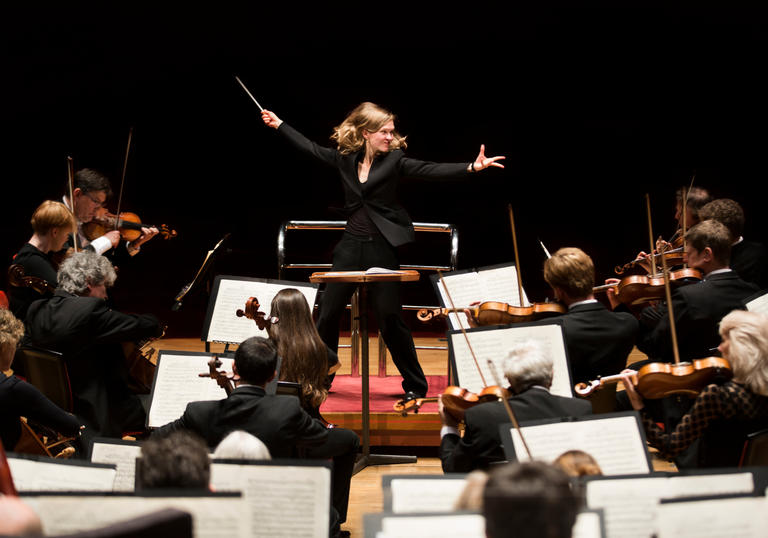When Edward Elgar wrote his Violin Concerto in 1909–10 his reputation was at its peak, with a decade of spectacular artistic successes behind him. But nothing was ever straightforward with this complicated man: elation and terrible self-doubt would alternate as he composed and, after the initial satisfaction at finishing a score, he would often react harshly against it.
But the Violin Concerto was a different matter. As one friend recalled: ‘I have never heard Elgar speak of the personal note in his music except in regard to the concerto, and of it I heard him say more than once, “I love it”.’ Elgar said more about that ‘personal note’ to his close friend Alice Stuart-Wortley, whom he nicknamed ‘Windflower’, grouping the concerto with his Second Symphony (1911) and his choral ode, The Music Makers (1912): ‘I have written out my soul in the concerto, Sym. II and the Ode and you know it … in these three works I have “shewn” myself.’ At the head of the concerto’s score Elgar placed a quotation from the novel Gil Blas by the 18th-century writer Alain-Rene Lesage: ‘Aqui esta encerrada el alma de .....’ (‘Here is enshrined the soul of .....’). The five dots appear to stand for Alice’s full initials, ASCS-W. Was Elgar in love with her? Certainly he found her fey beauty, her intelligence and her devotion to his work inspiring, but if she was ever more to him than a muse, we’ll probably never know.
If we can for a moment accept conventional Edwardian notions of ‘masculine’ and ‘feminine’, we can hear how muscular masculine ideas and more delicate, feminine ‘Windflower’ motifs alternate throughout the concerto’s long first movement. The striding opening theme suggests a self-portrait: Elgar the bluff , self-styled Edwardian man of action. But the violin’s entry takes us into a new world: meditative, soulful, subtly fluid in tempo and character. One striking detail: the violin never plays the concerto’s first theme (Elgar himself?) in its original form, instead responding to it, extending it lyrically or developing it with virtuoso fireworks.
It’s tempting to hear the Andante that follows as an imaginary love-scene. Now the feminine themes initiate, but intimate or dramatic conversation between these and the masculine element is just as crucial as in the first movement. The closing pages have a rapt, sensuous beauty unusual even by Elgar’s standards. The man of action takes the lead again in the finale, but memories of the slow movement grow stronger as the movement unfolds. Eventually, a ghostly return of the first-movement theme introduces the most original passage in the whole concerto: a dream-like accompanied cadenza full of longing, during which the strings strum their instruments like guitars. Eventually the first theme rouses soloist and orchestra again, leading to an exultant major-key conclusion; all the same, it may well be the unearthly vision of that haunting cadenza which lingers longest in the memory.
Passion and tenderness, joy and pain, abound in Sergei Prokofiev’s ballet score Romeo and Juliet, emotions often thrown into relief by his playful sense of humour. But whose passion and tenderness are we hearing? Unlike Elgar, Prokofiev was not the kind of man to ‘shew’ himself in his music. Instead there is a remarkable empathy with Shakespeare’s characters, plus a feeling that the playwright’s ripely beautiful poetry is being transformed into music of equal richness and poignancy.
Prokofiev completed the original score in 1935, while he was in still in the process of returning to his Russian homeland – he finally took up Soviet citizenship in 1936. In this early version the story had a happy outcome, but for the 1940 premiere at the Kirov Ballet it was much revised, and Shakespeare’s tragic ending was restored. It was a huge success, both in the USSR and across the world, and has never lost that popularity. The fact that music written for a Communist ballet theatre could become famous as the theme for a TV show celebrating capitalist enterprise (The Apprentice) would no doubt have appealed to Prokofiev’s ironic sense of humour.
Prokofiev extracted three orchestral suites from the ballet, in which the ordering of the movements had more to do with musical balance than with Shakespeare’s plot. But tonight we hear a selection of movements from these suites arranged so they reflect the unfolding of the tragedy. The enmity of the two rival families is presented with grim force in ‘Montagues and Capulets’ and we sense their determination to maintain the feud in ‘Dance of the Knights’. After being introduced to Juliet, we are spectators at the ball (‘Masks’) where the lovers meet for the first time. The famous Balcony Scene is portrayed gorgeously, then comes maximum contrast as we watch the lightning swordplay of Mercutio and Tybalt, witness Tybalt’s death agonies, then follow his funeral cortege. Next we meet the ambiguous Friar Laurence – wise counsellor or agent of the lovers’ downfall? Prokofiev’s sense of irony is very much to the fore here. Two colourful dance sequences lead to the full-on emotional catharsis of the last two numbers, in which Romeo, believing Juliet dead, kills himself, and the revived Juliet then discovers her lover’s body and follows him into the arms of death.
It may be easy to mock the absurd elements in Shakespeare’s dramatic showdown, but not when you hear Prokofiev’s musical response, in which his gift for long-arching, viscerally stirring melody is displayed at its finest, leading to an ending that’s touching in its simplicity.
© Stephen Johnson

